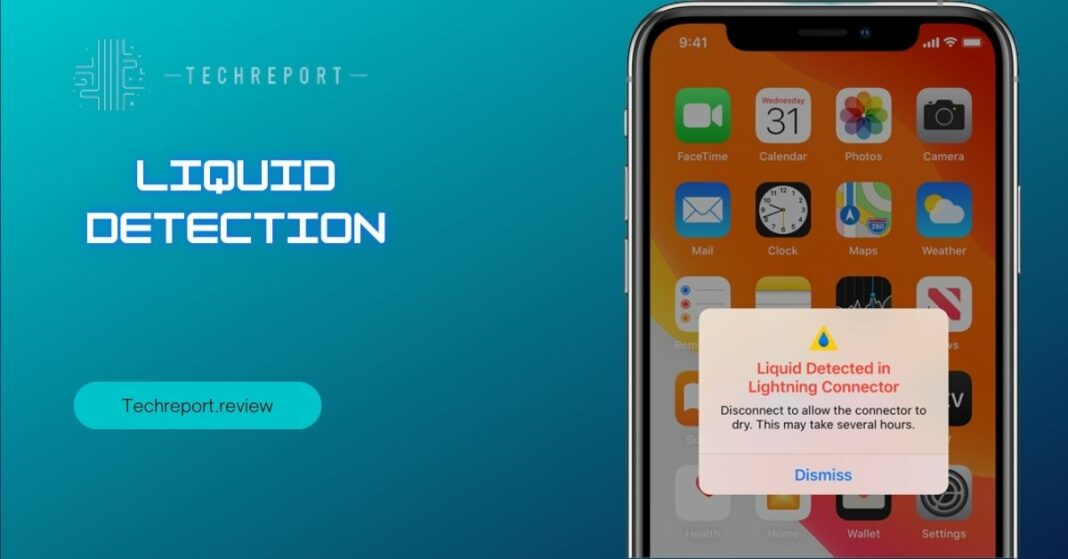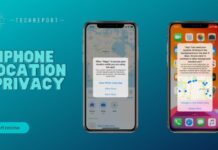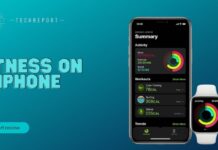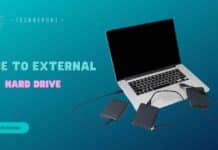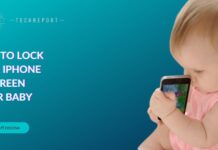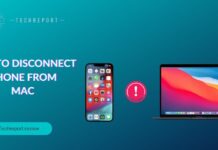The charging port on an iPhone plays a crucial role in keeping your device powered up and ready for use. It serves as the connection point for the charging cable, allowing you to recharge your phone’s battery conveniently. Without a properly functioning charging port, your iPhone would become useless when the battery drains out.
Encountering a wet charging port can lead to several potential risks and consequences that users should be aware of. When moisture enters the charging port, it can cause short circuits or damage to the internal components of the iPhone. This can result in malfunctions, erratic behavior, or even permanent damage to the device. Additionally, using a wet charging port may pose a safety hazard, as it increases the risk of electrical shock or fire.
In order to prevent these risks and ensure the optimal performance of your iPhone, it is crucial to address the issue of a wet charging port promptly. In the following sections, we will explore the steps and methods to effectively dry the charging port and mitigate any potential damage. By taking the necessary precautions and following the correct procedures, you can ensure the longevity and reliability of your iPhone.
Understanding the Importance of a Dry Charging Port
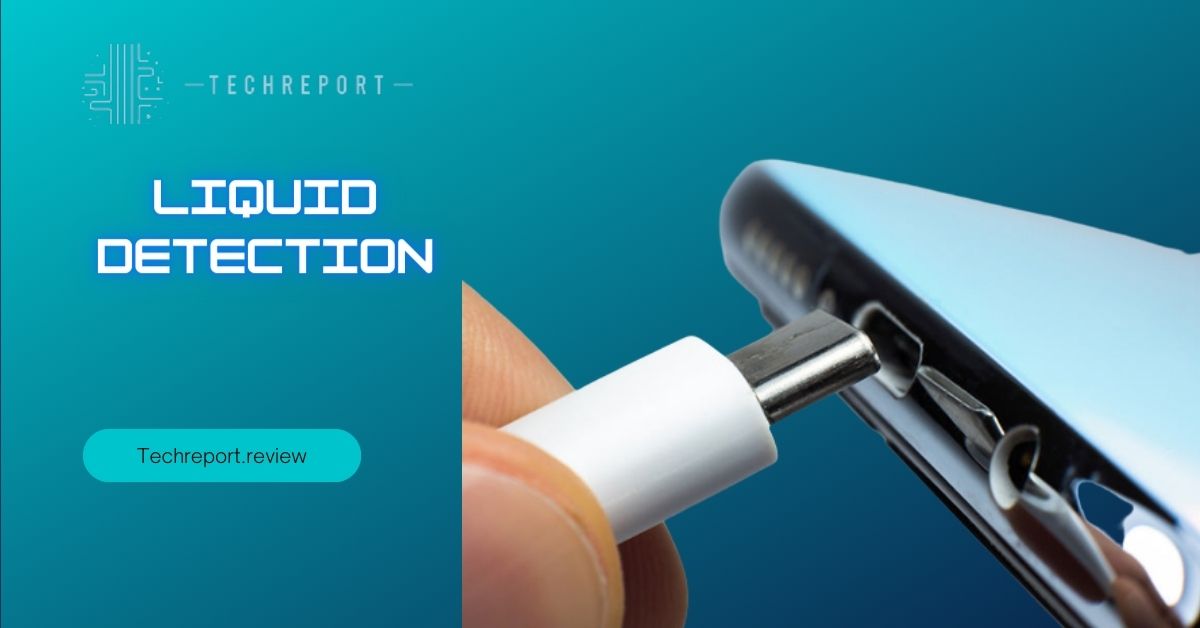
The charging port on an iPhone serves as a vital interface for multiple functions, including charging the device’s battery and transferring data between the iPhone and other devices. It is the primary connection point for the charging cable, allowing electricity to flow into the iPhone and replenish its battery power. Additionally, the charging port facilitates the transfer of data, such as syncing with a computer or transferring files to and from the device.
When the charging port of an iPhone becomes wet, it can lead to various potential damages and issues. The presence of moisture in the charging port can cause electrical short circuits, which may damage the internal components of the iPhone. This can result in malfunctions, loss of functionality, or even permanent damage to the device.
Furthermore, a wet charging port can interfere with the proper flow of electricity, leading to erratic charging behavior or the inability to charge the iPhone altogether. This can be frustrating and inconvenient, especially when you rely on your iPhone for various tasks throughout the day.
Given the potential risks and negative impact of a wet charging port, it is crucial to take immediate action to dry it. The longer the moisture remains in the charging port, the greater the chances of damage occurring to the internal components of the iPhone. By promptly addressing the issue, you can minimize the risk of long-term damage and restore the proper functioning of the charging port.
Moreover, a dry charging port ensures reliable charging and data transfer. It allows you to maintain seamless connectivity with other devices and ensures that your iPhone is always ready for use. By understanding the importance of a dry charging port and taking the necessary steps to address any moisture-related issues, you can protect the longevity and performance of your iPhone. In the following sections, we will explore various methods and techniques to effectively dry the charging port of your iPhone, enabling you to restore its functionality and prevent any potential damage.
What to Do if the Charging Port Gets Wet
If you find that the charging port on your iPhone has become wet, it’s important to act swiftly to minimize the risk of damage. Follow these step-by-step instructions to safely address the issue:
- Power Off Your iPhone: Before attempting to dry the charging port, ensure that your iPhone is powered off. This helps prevent any potential short circuits or damage that could occur if the device is on while moisture is present.
- Disconnect any Cables or Accessories: Remove any charging cables or accessories connected to the charging port. This ensures that you have unobstructed access to the port and reduces the risk of spreading moisture further into the device.
- Inspect the Charging Port: Carefully examine the charging port for visible signs of moisture. Use a flashlight if necessary to get a clear view. Look for water droplets, condensation, or any other indications of moisture.
- Wipe Excess Moisture: Gently wipe the exterior of the charging port with a soft, lint-free cloth. Ensure that the cloth is clean and dry to avoid introducing additional moisture. Take care not to push any moisture further into the port.
- Use Compressed Air: If there is still moisture present inside the charging port, you can use compressed air to help remove it. Hold the can of compressed air a few inches away from the port and blow short bursts of air into the port. This can help dislodge any remaining moisture.
- Let it Air Dry: After removing visible moisture and using compressed air, allow the charging port to air dry naturally. Avoid using any external heat sources such as hairdryers, as excessive heat can potentially damage the internal components of the iPhone.
While addressing a wet charging port, it’s crucial to follow safe practices to prevent any further damage to your iPhone:
- Avoid Excessive Moisture: Be mindful of using your iPhone in environments where it can come into contact with water, such as near pools, in the rain, or in the bathroom. Taking preventive measures to keep your device away from water sources can reduce the chances of the charging port getting wet.
- Use Water-Resistant Cases: Consider using a water-resistant or waterproof case for your iPhone. These cases provide an additional layer of protection against moisture and can help safeguard the charging port.
- Regularly Inspect and Clean the Charging Port: Make it a habit to inspect the charging port regularly for any debris, lint, or moisture. If you notice any foreign particles or moisture, gently clean the port using a soft brush or a clean, dry cloth.
Acting quickly when the charging port gets wet is essential to minimize potential risks and prevent further damage. Moisture can quickly seep into the internal components of the iPhone, leading to malfunctions, short circuits, or corrosion. By following the steps outlined above and promptly addressing the issue, you can increase the chances of restoring your iPhone’s functionality and prevent long-term damage.
Remember, time is of the essence when dealing with a wet charging port. The longer moisture remains in the port, the higher the risk of adverse effects. By taking immediate action and following the recommended steps, you can mitigate potential risks and ensure the proper functioning of your iPhone’s charging port.
Risks of Using a Wet Charging Port
Using a wet charging port on your iPhone can pose several risks and consequences that may impact the functionality and longevity of your device. It is crucial to be aware of these risks and take appropriate action to prevent further damage. The following are some of the potential risks associated with using a wet charging port:
- Electrical Short Circuits: Moisture in the charging port can create a conductive path, leading to electrical short circuits. Short circuits can cause sudden power fluctuations, overheating, and even damage to the internal components of your iPhone.
- Corrosion: When water or any other liquid comes into contact with the metal contacts in the charging port, it can trigger corrosion. Corrosion gradually erodes the metal contacts, impairing their ability to establish a proper connection for charging and data transfer. This can result in slow charging, erratic charging behavior, or complete charging failure.
- Malfunctioning or Unresponsive Charging: A wet charging port may cause your iPhone to exhibit erratic charging behavior or become unresponsive when connected to a power source. Your device may fail to charge properly or may constantly disconnect and reconnect during charging.
Moisture in the charging port can potentially damage the internal components of your iPhone. The delicate circuitry and electronic components are susceptible to corrosion and short circuits when exposed to water or liquid. Here are some of the potential damages that can occur:
- Battery Damage: The battery is one of the most critical components of your iPhone. Exposure to moisture can compromise the battery’s performance, leading to reduced battery life, unexpected shutdowns, or even complete battery failure.
- Logic Board Damage: The logic board, also known as the motherboard, houses crucial components like the processor, memory, and other important circuitry. Water or liquid damage to the logic board can result in malfunctions, system instability, or complete failure of the device.
- Connector and Port Damage: Moisture can cause corrosion and oxidation on the connectors and ports inside your iPhone. This can affect the charging port’s ability to establish a proper connection with charging cables, headphones, or other accessories.
Using a wet charging port on your iPhone can pose safety hazards that should not be overlooked. Here are some of the potential safety concerns:
- Electric Shock: When moisture is present in the charging port, there is an increased risk of electric shock when plugging in or unplugging the charging cable. This can be dangerous, especially if you touch exposed metal parts while handling a wet device.
- Fire Hazard: In extreme cases, a wet charging port can lead to a fire hazard. Short circuits caused by moisture can generate heat and sparks, potentially igniting flammable materials nearby. It is crucial to prevent any such risks by addressing the issue promptly and avoiding the use of a wet charging port.
To ensure the safety of yourself and your device, it is essential to avoid using a wet charging port and take immediate steps to dry it thoroughly. By understanding the risks associated with a wet charging port, you can make informed decisions and protect your iPhone from potential damage and safety hazards.
Signs of a Wet Charging Port
It is essential to recognize the signs that indicate your iPhone’s charging port is wet. By being aware of these signs, you can take prompt action to prevent potential damage and ensure the proper functioning of your device. Here are some common signs to look out for:
- Visible Moisture: One of the most obvious signs of a wet charging port is the presence of visible moisture. You may notice water droplets, condensation, or a damp surface inside the charging port. It is crucial to avoid connecting any charging cables or accessories until the port is completely dry.
- Discoloration: Moisture can cause discoloration on the metal contacts of the charging port. If you observe any unusual or abnormal color changes, such as a greenish or brownish tint, it is an indication of possible moisture damage.
- Smudging or Stains: Wetness in the charging port can leave smudges or stains caused by water or liquid residue. These marks may be visible on the inner walls of the port or on the charging cable itself.
To visually inspect and recognize a wet charging port, follow these steps:
- Ensure Proper Lighting: Find a well-lit area or use a flashlight to illuminate the charging port for a clear view. Adequate lighting will help you identify any signs of moisture or damage more effectively.
- Remove Any Debris: Before inspecting the charging port, gently remove any dust, lint, or debris that may have accumulated inside. This will help you get a clearer view of the port’s condition.
- Use Magnification if Necessary: If you have difficulty seeing small details, consider using a magnifying glass or the zoom function on your smartphone’s camera to examine the charging port more closely. This will help you spot any subtle signs of wetness or damage.
Being aware of the signs that indicate a wet charging port is crucial for taking prompt action. Ignoring or neglecting these signs can lead to further damage and potential complications with your iPhone. Here’s why it is important to recognize these signs:
- Prevention of Further Damage: By promptly identifying a wet charging port, you can prevent the moisture from causing additional harm to your device’s internal components. Taking immediate action will minimize the risk of corrosion, short circuits, or other potential damages.
- Maintenance of Device Performance: Addressing a wet charging port in its early stages can help maintain the optimal performance of your iPhone. Preventing moisture-related issues will ensure uninterrupted charging, reliable data transfer, and the overall smooth functioning of your device.
- Mitigation of Safety Hazards: Acting promptly upon recognizing a wet charging port helps mitigate safety hazards. By avoiding the use of a wet charging port, you minimize the risk of electric shock, fire hazards, or other potential accidents.
Remember, prevention is key when it comes to protecting your iPhone from moisture damage. By being vigilant and attentive to the signs of a wet charging port, you can take the necessary steps to dry it properly and ensure the longevity of your device.
Rice or Silica Gel Packs: Do They Work?
When faced with a wet charging port on an iPhone, many people turn to popular household remedies such as rice or silica gel packs. These methods are believed to absorb moisture and aid in drying electronic devices. However, it’s important to understand their effectiveness and limitations before relying solely on them.
Rice Method
The rice method involves placing your iPhone in a container filled with uncooked rice and leaving it for a certain period. The rice supposedly absorbs the moisture from the charging port. Similarly, some people use other moisture-absorbing substances like oatmeal or couscous as alternatives to rice.
Silica Gel Packs Method
Silica gel packs, commonly found in packaging for various products, are small pouches filled with silica gel beads. These beads are known for their ability to absorb moisture effectively. Placing your iPhone along with a few silica gel packs in an airtight container is believed to help draw out the moisture from the charging port.
While the rice and silica gel pack methods are popular DIY remedies, it’s important to note their limitations and potential risks:
- Limited Effectiveness: Both rice and silica gel packs have limited moisture-absorbing capabilities. They may not be able to sufficiently remove moisture from deep within the charging port or other internal components of the iPhone. As a result, relying solely on these methods may not fully dry the charging port, leaving the device vulnerable to potential damage.
- Residue and Debris: Rice grains or silica gel beads can leave residue or debris in the charging port or other openings of the iPhone. This residue may further impede proper charging or cause other issues with the device’s functionality.
- Time-Consuming: Drying an iPhone using rice or silica gel packs can be a time-consuming process. It may take several hours or even days for the moisture to be absorbed fully. During this time, you may be without your iPhone, which can be inconvenient.
- Potential Damage: Placing an iPhone in rice or silica gel packs can also pose potential risks. Rice grains or silica gel beads can get lodged in the charging port or other openings, leading to physical damage or obstruction of the device’s connectors.
While rice or silica gel packs may offer some benefit, it’s advisable to consider alternative options and take additional precautions to effectively dry the charging port:
- Air Drying: The most recommended method for drying a wet charging port is air drying. Disconnect your iPhone from any power source and gently shake out any excess moisture. Then, place the device in a well-ventilated area at room temperature. Allow it to air dry naturally without any additional heat sources. This method ensures gradual and thorough drying without the risk of physical damage or debris.
- Use Compressed Air: Another option is to use compressed air to blow out any remaining moisture from the charging port. However, it’s important to use a can of compressed air specifically designed for electronics and follow the manufacturer’s instructions. Keep a safe distance and use short bursts of air to avoid causing damage to the charging port or other sensitive components.
- Professional Assistance: If you’re uncertain or uncomfortable with DIY methods, consider seeking professional assistance. Apple Authorized Service Providers or Apple Stores have trained technicians who can assess and dry your iPhone using specialized equipment. They can ensure a thorough and safe drying process, minimizing the risk of further damage.
Remember, regardless of the method you choose, it’s crucial to avoid using your iPhone or attempting to charge it while the charging port is still wet. Patience is key when drying electronic devices, as rushing the process can lead to irreversible damage.
Charging an iPhone with a Slightly Wet Charging Port
Charging an iPhone with a slightly wet charging port requires extra caution to avoid potential damage to the device. Here are some precautions you should take:
- Disconnect from Power Source: If you discover that your iPhone’s charging port is slightly wet, the first step is to disconnect it from any power source immediately. This includes unplugging the charging cable or removing the iPhone from any charging dock. Continuing to charge the device with a wet charging port can lead to short-circuits or further damage.
- Inspect the Charging Port: Before attempting to charge the iPhone again, carefully inspect the charging port. Use a flashlight or a well-lit area to check for any visible moisture or residue inside the port. If you notice any moisture, resist the urge to plug in the charger until the port is completely dry.
- Avoid Forced Drying: It may be tempting to use heat sources like hairdryers or microwaves to expedite the drying process, but this can be dangerous for your iPhone. Forced drying can cause internal components to overheat or warp, leading to permanent damage.
- Patience is Key: When dealing with a slightly wet charging port, patience is essential. Allow the charging port to air dry naturally in a well-ventilated area at room temperature. Avoid using your iPhone until the port is thoroughly dry to prevent any potential issues.
To safely charge your iPhone with a slightly wet charging port, follow these tips:
- Use a Dry Charging Cable: Ensure that the charging cable itself is dry before plugging it into the charging port. Wipe the cable’s connectors with a clean, dry cloth to remove any moisture or debris.
- Insert the Charging Cable Gently: When plugging the charging cable into the charging port, do so gently and avoid applying excessive force. This will prevent any potential damage to the connectors or the charging port itself.
- Monitor Charging Progress: While charging your iPhone, keep a close eye on the charging progress and the device’s temperature. If you notice any unusual behavior, such as the iPhone becoming unusually hot or not charging correctly, immediately disconnect the charger.
- Opt for Wireless Charging: If available, consider using wireless charging as an alternative while the charging port is still slightly wet. Wireless charging eliminates the need to plug in the charging cable, reducing the risk of potential damage.
It cannot be stressed enough that allowing the charging port to dry completely is crucial before using your iPhone again. Even a slightly wet charging port can pose risks if not properly dried. Moisture in the charging port can cause short circuits or corrosion over time, potentially leading to permanent damage to the device.
If you’re unsure whether the charging port is fully dry, err on the side of caution and wait a little longer before attempting to charge your iPhone again. Patience during the drying process is the key to ensuring the longevity and proper functioning of your iPhone.
In conclusion, charging an iPhone with a slightly wet charging port requires careful handling and patience. By taking the necessary precautions and allowing the charging port to dry completely, you can prevent further damage and ensure the safe use of your device. Remember, if you have any doubts or concerns, seeking professional assistance from an Apple Authorized Service Provider is always a wise choice. Your iPhone is a valuable investment, and proper care will prolong its lifespan and maintain its performance.
In Crux
In conclusion, maintaining a dry charging port is vital for the proper functioning and longevity of your iPhone. The charging port plays a crucial role in charging your device and facilitating data transfer. Allowing moisture or liquid to enter the charging port can lead to a range of issues, including short circuits, corrosion, and potential damage to internal components.
By keeping the charging port dry, you ensure a reliable and uninterrupted charging experience, as well as the overall health of your iPhone. Taking proactive measures to prevent and address a wet charging port is an essential part of responsible device maintenance.
To ensure the continued performance and safety of your iPhone, it’s important to follow the guidelines provided in this blog. If you encounter a wet charging port, take immediate action to dry it using safe and effective methods. Remember the key steps: disconnect from power, inspect for moisture, air dry naturally, and avoid using heat sources or forcing the drying process.
Additionally, it’s crucial to remain vigilant and address any signs of a wet charging port promptly. Regularly inspect your iPhone’s charging port and be mindful of any changes or indications of moisture. By being proactive, you can prevent potential damage and maintain a reliable charging experience.
If you have concerns or doubts about the condition of your charging port or require professional assistance, it’s advisable to reach out to an Apple Authorized Service Provider. They have the expertise and resources to address any issues and ensure the optimal functioning of your iPhone.
By following these guidelines and taking the necessary actions to keep your charging port dry, you can enjoy the full benefits and functionality of your iPhone while minimizing the risk of potential damage.
Remember, your iPhone is not just a device; it’s a valuable companion that connects you to the world. By practicing proper care and maintenance, you can prolong its lifespan and maximize its performance, ensuring a seamless and reliable experience for years to come.
How much did you like our detailed Unlock the Secrets: How to Dry Your iPhone Charging Port. Please share these Blogs with your friends on social media.
Related Blogs
- Is iPhone 14 Worth the Hype
- iPhone 15 Pro
- Apple CarPlay
- Apple Watch
- iPhone 6 vs Nexus 6
- Apple Vision Pro
FAQs about How to Dry Your iPhone Charging Port
What should I do if the charging port on my iPhone gets wet?
If the charging port on your iPhone gets wet, the first step is to disconnect any charging cables or power sources. Then, use a soft cloth or tissue to gently remove any visible moisture. Allow the charging port to air dry naturally before attempting to charge your device again.
Is it safe to use my iPhone while the charging port is wet?
It is not recommended to use your iPhone while the charging port is wet. Moisture in the charging port can lead to short circuits or damage to the internal components. It's best to let the charging port dry completely before using your device.
Can a wet charging port cause damage to my iPhone?
Yes, a wet charging port can potentially cause damage to your iPhone. Moisture can lead to corrosion or short-circuits, which may result in malfunctioning of the charging port or other components.
How long does it take for the charging port on an iPhone to dry naturally?
The drying time for the charging port on an iPhone can vary depending on the extent of moisture and environmental conditions. In most cases, allowing the charging port to air dry naturally for several hours or overnight is recommended.
Can I use a hairdryer to dry the charging port on my iPhone?
It is not recommended to use a hairdryer or any other heat source to dry the charging port on your iPhone. Excessive heat can damage the internal components. Air drying is the safest method.
Should I use rice or silica gel packets to dry the charging port on my iPhone?
While rice or silica gel packets are commonly suggested, they are not the most effective methods for drying a charging port. These materials may not absorb moisture efficiently, and there is a risk of small particles getting lodged in the port. Air drying is the preferred method.
What if the charging port on my iPhone doesn't dry after using common methods?
If the charging port on your iPhone doesn't dry after using common methods, it's recommended to seek professional assistance. Contact an Apple Authorized Service Provider or Apple Support for further guidance.
Can I still charge my iPhone if the charging port is slightly wet?
It is not advisable to charge your iPhone if the charging port is even slightly wet. Moisture can interfere with the charging process and potentially damage the device. Wait until the charging port is completely dry before attempting to charge your iPhone.
How can I prevent the charging port on my iPhone from getting wet?
To prevent the charging port on your iPhone from getting wet, avoid exposing it to water or other liquids. Use caution when charging near water sources and consider using protective accessories such as waterproof cases or port covers.









